Tuesday, July 23, 2013
 A forklift is a powerful machine that has the ability to lift and move easily large and heavy things from one place to another. These machines are quite useful in warehouses, factories, landscaping companies and other businesses that sell products as it can haul up thousands of pounds without much effort. They are quite similar to construction equipment as they are made of steel.
A forklift is a powerful machine that has the ability to lift and move easily large and heavy things from one place to another. These machines are quite useful in warehouses, factories, landscaping companies and other businesses that sell products as it can haul up thousands of pounds without much effort. They are quite similar to construction equipment as they are made of steel.
Forklift is very easy to use. It has two steel forks in front of the machine which protrude from the front of the forklift. These forks are then placed underneath the object which you need to move. The forklift is then positioned manually in order to lift and move the item to wherever it is needed. Most of these forklifts have simple steering system which is similar to a joystick or a truck.
In most cases, a forklift can be powered by gasoline but others may use propane or electricity to make it work. An electricity powered forklift is less expensive to operate yet it is less powerful and is mostly used indoors. Gasoline and propane powered forklifts, on the other hand, are more expensive but are able to work harder and lift more. These types of forklifts are mostly used outdoors. The only disadvantage with these forklifts is that they will be requiring more maintenance as compared to other kinds of forklifts.
Now, when choosing the right type of forklift, there are a lot of things you need to consider. First on the list is your budget. The price of a forklift depends largely on the fuel it uses and its ability to lift heavier loads. Other factors you need to consider are its warranty, maintenance, ability to lift a specific weight as well as your indoor/outdoor needs. These are just some of the things you should consider if you plan to buy a forklift.
You would also need a license in order to operate a forklift. Proper maintenance and proper training of individuals who are handling the forklifts is quite crucial if you wish to get the most out of your forklift. It does not only extend the life of the machine but it also keeps people safe from unnecessary injuries.
Thursday, May 23, 2013
There are plenty of industrial equipment available nowadays. They are usually big and made of steel and titanium for optimum strength. These machines are often being used to lift and transfer heavy materials which may probably weigh thousands of pounds. However, what I want to know is which amongst the many types of industrial equipment are the most popular and which ones are the most important in the industrial field.
Below are some of the industrial equipment which are considered to be popular and important in the industrial workplace.
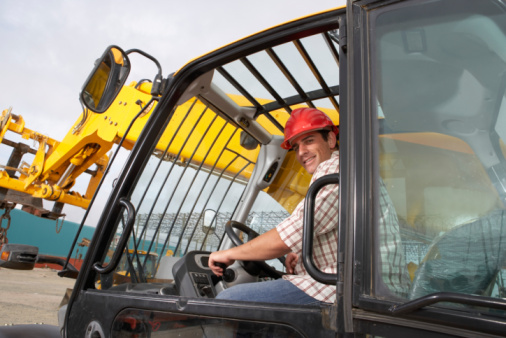 1. Bulldozers - These are gigantic machines mostly being used in mining and construction industries. It can lift and move substantial amounts of dirt and other debris from one place to another. It’s also being used to dig up the ground and provide room for house construction and other types of buildings and can operate under a lot of conditions including rain, hail, and snow.
1. Bulldozers - These are gigantic machines mostly being used in mining and construction industries. It can lift and move substantial amounts of dirt and other debris from one place to another. It’s also being used to dig up the ground and provide room for house construction and other types of buildings and can operate under a lot of conditions including rain, hail, and snow.
2. Cranes – This equipment is usually being used to transport difficult and heavy items from one place to another by using the arm of the crane to swing an object from one location to another. The arm of the crane can be adjusted in accordance to how far the object needs to go. Cranes, unlike bulldozers, can transport objects over uneven levels of ground.
3. Excavators – These are engineering vehicles consisting of backhoes and cabs. They are primarily being used to dig holes, trenches, and foundations. They are also being used to destroy objects which are no longer needed and will be compressed and condensed afterwards.
4. Fork Lifts – These are warehouse vehicles being used to lift, hoist, and transfer large and heavy items from one place to another. Forklifts are considered to be indispensable pieces of equipment in any industrial workplace.
5. Compressors – These equipment are generally used in a factory-type of industry. They provide high pressures of air and other forms of gases and they can be regulated in order to maintain the required amount of pressure in the tank.
These are just the popular types of equipment being used today. Each type of industrial equipment is made to accomplish a particular task which is needed in the overall success in this line of work. Without these kinds of equipment, the industrial business would be dead by now.
Friday, April 26, 2013
Heavy machinery is one basic need of every construction firm. However, prices of these kinds of equipment can be quite high that not all companies can afford to have one of their own. Now these construction companies need not worry if they can’t afford to buy construction equipment because there are a lot of rental companies all over the country where they can just rent them. But before doing so, there are some things they should take into account to make sure they’re not just wasting their company funds.
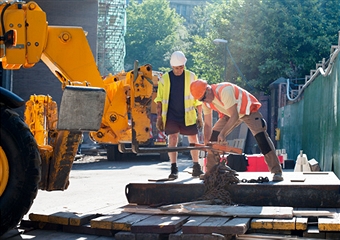 1. Choose a reliable and reputable construction equipment rental company that allows their customers to take advantage of weekly or monthly agreements. This will enable construction firm owners to take advantage of lower rates for long term agreements and enjoy bigger savings.
1. Choose a reliable and reputable construction equipment rental company that allows their customers to take advantage of weekly or monthly agreements. This will enable construction firm owners to take advantage of lower rates for long term agreements and enjoy bigger savings.
2. List all the equipment you’ll need and what you’ll be using them for. This will help you decide which equipment to rent under a monthly agreement and which ones can be done on a weekly or daily rental contract. This will also help you decrease your company’s expenses a little further.
3. Choose a company that offers the latest models of equipment. These machines will definitely speed up the work that needs to get done. Just make sure to employ licensed operators as it’s one of the requirements of heavy machinery rental companies.
4. Make sure you choose a rental company that has branches in different areas so that you’ll be assured that help will come to you immediately, just in case your rented equipment breaks down in the middle of your operations.
Saturday, March 2, 2013
The best way to get a job done safely and efficiently is to know yourself, the job site, and your equipment. That’s why a backhoe loader can be very productive only if it’s operated properly. Backhoes have several models and they all have safety features which include steps and grab handles to get on and off the machine. It also has frame lock levers and attaching levers used to keep the backhoe firmly fastened to the loader frame during operation.
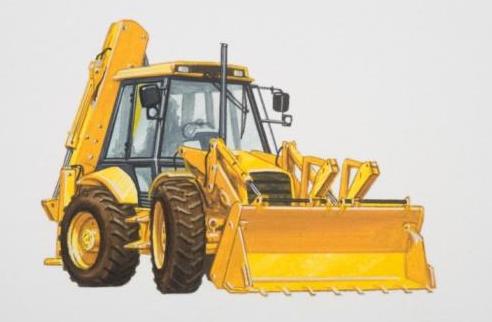 Some backhoes come with safety chains which prevent its mounting frame to rotate backwards and accidentally trap the operator, which may result in serious injury or even death. Hence, it is crucial to always check all the mounting and attachment points along with the safety chain before using the backhoe.
Some backhoes come with safety chains which prevent its mounting frame to rotate backwards and accidentally trap the operator, which may result in serious injury or even death. Hence, it is crucial to always check all the mounting and attachment points along with the safety chain before using the backhoe.
Always check for leaks, cracks, broken or damaged parts, and excessive wear. If you have attached the backhoe to the loader, take time to inspect it and perform regular maintenance. Don’t forget to check its control levers. You should also take the warning and safety signs and instructional decals seriously and remember to replace any missing or damaged decals.
Grease all the zerk fittings every eight hours or so and check the hydraulic fluid and oil everyday. The backhoe will not operate if the fluid is low. Hence, always take time to check your equipment.
When you leave the operator seat of the backhoe, always remember to lower the attachment or bucket to the ground, turn off the engine, remove the ignition key, and then exit the machine. On your next job site, make sure that you have fully raised the front and rear stabilizers, put the backhoe seat into the “down” position, and installed the transport locking pin before you drive off.
Other things you have to keep in mind:
- Select the correct size of bucket for the job.
- Secure the work area that is going to be excavated and use flags to mark the area.
- Never work in places that have inadequate overhead clearances.
- Always keep bystanders or other workers away from the swing area. They might get injured if they get in the way of the boom swinging.
Monday, February 25, 2013
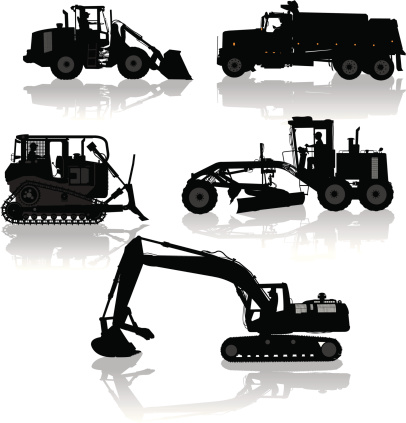 If you look at any equipment literature, you will notice at once that the most important change on the last several years is increased productivity. Next to this follows greater comfort and safety. These are actually the results of different advancements that allow machines to respond faster to increased power demands.
If you look at any equipment literature, you will notice at once that the most important change on the last several years is increased productivity. Next to this follows greater comfort and safety. These are actually the results of different advancements that allow machines to respond faster to increased power demands.
Most of the newer models of machineries have electronic controls which will actually optimize fuel consumption, hydraulic system, and engine and transmission performance. One example of this is the electronically controlled power shift transmissions of the mid-sized G series wheel loaders of CAT (Caterpillar). Each of its transmission has an electronic clutch pressure control that smooth shifts the gears and an auto-shift capability that ease the pressure on the operator.
Manufacturers today give utmost importance to the comfort and convenience of machine operators. Since good machine operators are hard to find these days, manufacturers need to find ways to make their job easier and more efficient and productive. They have come up with new equipment designs that offer reduced noise and vibration, improved comfort and better visibility. The new control system also requires less effort for both the experienced and the inexperienced operator.
Aside from that, machines nowadays already have electronic monitoring systems that provide constant information on the state or health of the machine. These systems provide information to technicians, including service modes which will help them diagnose conditions more quickly and make their routine maintenance much easier.
If you compare the heavy equipment today to the machines of the past, you will see that the changes are for better. The machines of the past relied more on the skills and techniques of the operator whilst the heavy equipment today comes with electronic features. These electronics make the life of an operator easier since he does not have to go out and check the fluids anymore. All he needs to do is take a look at the instrument panel of the machine, which actually saves a lot of time.
Operators who’ve handled machines of the past know firsthand that it cannot compete with the machines of today. With the advancement of technology, it makes you wonder how great heavy machinery will get and what other features it will have to make the life of an operator even easier than it is today.
Wednesday, February 20, 2013
Even if an excavation company plans out a project carefully, there will really come a time when there is not enough equipment available to work the requirements of a project. At some point, you will be running out of time and the choices you will have are between buying the machines you need or renting them out.
Now, it is not going to be easy to make these kinds of decisions. There are a number of factors you’ll need to consider.
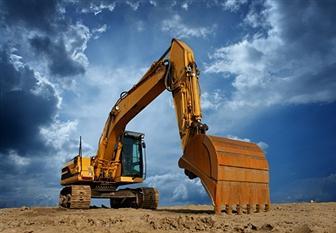 Rental Price
Rental Price
The price to rent will vary and depend on what type of equipment you need. Some may cost as much as 12,000 dollars a month, just like the off road dump trucks and excavators. Even if you own a big and profitable company and are working on a big project, such price is definitely outrageous! This is because some rental companies make a killing with the machines they rent out. You can rent their equipment on a daily or weekly basis and price can be very high or just right, depending on what area you work in.
Buying
If you work on large projects more often, need more equipment and don’t want to rent, then you should choose to buy your equipment. This will save you money in the long run, provided you’ll be using the equipment again. However, if you only need the machine for one or two projects then it will be wise for you to just rent it. You won’t own the equipment but you don’t want to buy anything you won’t be using either.
Servicing
One of the advantages of renting the equipment is that your company won’t be responsible for fixing anything that breaks. It is the company you rent the machine from that is responsible for any repairs since you don’t own the equipment. The price for repair is usually included in the rental contract. Hence, if something goes wrong, you just need to call the company and they will come and fix the problem.
On the contrary, if you choose to buy the equipment then your company will be responsible for the repairs and regular maintenance and services of the equipment.
Aside from the factors mentioned above, you also need to consider your finances. If you cannot afford to buy the machinery then you should go with renting. So whether you decide to rent or buy, what is more important is you’ll get the machines you need to accomplish your job and stay ahead of time.
Monday, February 18, 2013
There are some pieces of heavy equipment that require weeks instead of years of training. One of these equipment is the excavator. I found out that I only need to have six weeks of full-time training in order to become an excavator operator. During this training I will learn about all aspects of operating the excavator from controls, grading and soil types to safety and maintenance. This also includes certification and personal protective gears. I need not worry about the training cost since most schools provide information on how a student can secure funding to pay for the cost of the course.
Tuesday, February 12, 2013
Whenever heavy machinery is being used, appropriate safety measures should be taken to ensure people and property do not get hurt or damaged. The machine operator is the most important safety feature in any piece of equipment since it is really dangerous when not operated properly. Therefore, the operator needs to be adequately trained in safety procedures and in operating the machine in order to prevent injury and damage.
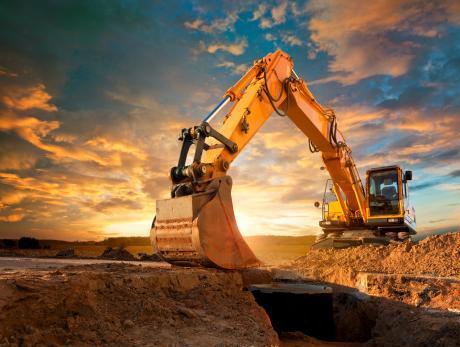 Excavator safety requires knowing and understanding the functions of an excavator. And it starts with being aware of the position of the lip of the hole and being sure that the bucket does not dig very closely to the tracks. Hence, the excavator operator must avoid creating an undercut as this will increase the likelihood of a cave-in. Keep in mind also that overloading the bucket could cause the machine to tip over or become unstable. It is very important that the operator is aware of the load limits of the machine in order to ensure safety.
Excavator safety requires knowing and understanding the functions of an excavator. And it starts with being aware of the position of the lip of the hole and being sure that the bucket does not dig very closely to the tracks. Hence, the excavator operator must avoid creating an undercut as this will increase the likelihood of a cave-in. Keep in mind also that overloading the bucket could cause the machine to tip over or become unstable. It is very important that the operator is aware of the load limits of the machine in order to ensure safety.
Another way to ensure excavator safety is to make sure it has enough fuel before the operator begins to use it. The machine should be able to operate at all times, especially during an emergency wherein the operator needs to dump an unstable load. If the fuel of the excavator is on low level, it may shut down unexpectedly and create an unstable and dangerous situation. Another good step to ensure excavator safety is to conduct visual inspection for damage or other unsafe conditions of the machine prior to operation.
Another safety priority in operating an excavator is assessing if the ground is safe to drive. Avoid driving on unstable grounds. Also, the operator should avoid positioning the machine very closely to the edge of a ditch or hole. The excavator should not operate in an area where people are inside the ditch or hole and the operator should wait until all the other workers are clear. People working outside of the machine should also be aware of its function and avoid getting caught in the tracks, being contacted by the bucket, or being caught in a cave-in.
Friday, February 8, 2013
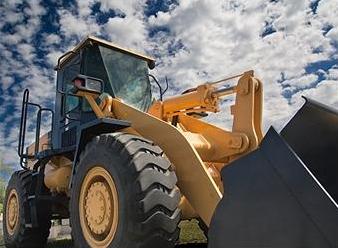 Bumped into a friend last night and he asked me if I know how to use or perhaps operate a digger. A digger you say? Is that the one I use when I do some gardening in my backyard? With a straight and serious look from my friend, I quickly retracted my words. A digger, or an excavator to be specific, was actually one of the things I wanted to get my hands on and drive.
Bumped into a friend last night and he asked me if I know how to use or perhaps operate a digger. A digger you say? Is that the one I use when I do some gardening in my backyard? With a straight and serious look from my friend, I quickly retracted my words. A digger, or an excavator to be specific, was actually one of the things I wanted to get my hands on and drive.
Excavators are toys for heavy equipment drivers and have earned the respect of utility and construction workers worldwide. However, one has to set aside time to read its operator’s manual, become familiar with its control, knobs, and buttons and get as much training in running and operating the excavator. The different warning labels, charts and instructions that can be seen stuck onto the many parts and pieces of the excavator will guide you in operating and performing maintenance on the machine. And since I want to try this kind of toy, I’d better get as much training and information about running and operating an excavator before I get my hands on it. Will keep you posted once I start on my training, so ta ta for now!
Thursday, February 7, 2013
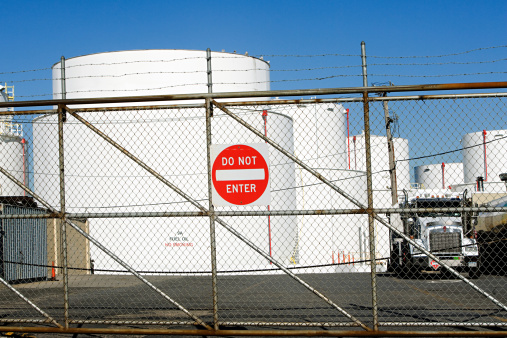 Working in a confined space is like putting your life in danger especially if you don’t have the right safety gears and the proper training in identifying and controlling the risks involved when you expose yourself to the hazardous elements inside the confined place. Generally, confined rooms or chambers offer restricted entry and exit. Examples of these are sewers, pits, silos, manholes, pipes and storage tanks. These places pose risk for workers because of its physical features and the hazardous elements present in them. Some of the risks are:
Working in a confined space is like putting your life in danger especially if you don’t have the right safety gears and the proper training in identifying and controlling the risks involved when you expose yourself to the hazardous elements inside the confined place. Generally, confined rooms or chambers offer restricted entry and exit. Examples of these are sewers, pits, silos, manholes, pipes and storage tanks. These places pose risk for workers because of its physical features and the hazardous elements present in them. Some of the risks are:
• Poor air circulation and ventilation
• Restricted entry and exit
• Presence of toxic chemicals
• Existence of fire hazard materials
• Toxic fumes, dust, and gases
Almost all companies have confined spaces. People may get inside a confined space every now and then. Without adequate training, they are in danger. The training should include assessment and monitoring of confined spaces, especially during the duration of occupation. For example, detection of oxygen inadequacy or the presence of toxic fumes and gases while inside a confined space should prompt wearing of appropriate breathing apparatus. Whereas enclosed spaces with flammable gases pose fire hazard when it reaches a certain concentration. Hence, it is important that appropriate fire resistant is worn while working inside in the area and at the same time fire safety equipment should be at hand.
This is the reason why managers and company owners should send their workers to various industrial safety training programs including confined space training. They should not ignore the value of safety training. Employees with adequate occupational safety training undeniably reduce the chances of accidents at work and with this training they would be an asset to your company.
Managers or company owners need to go through safety training as well. It is important that they also know the safety measures. They ought to motivate their employees to uphold safety and keep the workplace a safe place for everyone. Remember, it is not just the responsibility of some people to keep an occupational site safe but it is the responsibility of everyone.
 A forklift is a powerful machine that has the ability to lift and move easily large and heavy things from one place to another. These machines are quite useful in warehouses, factories, landscaping companies and other businesses that sell products as it can haul up thousands of pounds without much effort. They are quite similar to construction equipment as they are made of steel.
A forklift is a powerful machine that has the ability to lift and move easily large and heavy things from one place to another. These machines are quite useful in warehouses, factories, landscaping companies and other businesses that sell products as it can haul up thousands of pounds without much effort. They are quite similar to construction equipment as they are made of steel.  1. Bulldozers - These are gigantic machines mostly being used in mining and construction industries. It can lift and move substantial amounts of dirt and other debris from one place to another. It’s also being used to dig up the ground and provide room for house construction and other types of buildings and can operate under a lot of conditions including rain, hail, and snow.
1. Bulldozers - These are gigantic machines mostly being used in mining and construction industries. It can lift and move substantial amounts of dirt and other debris from one place to another. It’s also being used to dig up the ground and provide room for house construction and other types of buildings and can operate under a lot of conditions including rain, hail, and snow. 1. Choose a reliable and reputable construction equipment rental company that allows their customers to take advantage of weekly or monthly agreements. This will enable construction firm owners to take advantage of lower rates for long term agreements and enjoy bigger savings.
1. Choose a reliable and reputable construction equipment rental company that allows their customers to take advantage of weekly or monthly agreements. This will enable construction firm owners to take advantage of lower rates for long term agreements and enjoy bigger savings. Some backhoes come with safety chains which prevent its mounting frame to rotate backwards and accidentally trap the operator, which may result in serious injury or even death. Hence, it is crucial to always check all the mounting and attachment points along with the safety chain before using the backhoe.
Some backhoes come with safety chains which prevent its mounting frame to rotate backwards and accidentally trap the operator, which may result in serious injury or even death. Hence, it is crucial to always check all the mounting and attachment points along with the safety chain before using the backhoe.  If you look at any equipment literature, you will notice at once that the most important change on the last several years is increased productivity. Next to this follows greater comfort and safety. These are actually the results of different advancements that allow machines to respond faster to increased power demands.
If you look at any equipment literature, you will notice at once that the most important change on the last several years is increased productivity. Next to this follows greater comfort and safety. These are actually the results of different advancements that allow machines to respond faster to increased power demands.  Rental Price
Rental Price Excavator safety requires knowing and understanding the functions of an excavator. And it starts with being aware of the position of the lip of the hole and being sure that the bucket does not dig very closely to the tracks. Hence, the excavator operator must avoid creating an undercut as this will increase the likelihood of a cave-in. Keep in mind also that overloading the bucket could cause the machine to tip over or become unstable. It is very important that the operator is aware of the load limits of the machine in order to ensure safety.
Excavator safety requires knowing and understanding the functions of an excavator. And it starts with being aware of the position of the lip of the hole and being sure that the bucket does not dig very closely to the tracks. Hence, the excavator operator must avoid creating an undercut as this will increase the likelihood of a cave-in. Keep in mind also that overloading the bucket could cause the machine to tip over or become unstable. It is very important that the operator is aware of the load limits of the machine in order to ensure safety. Bumped into a friend last night and he asked me if I know how to use or perhaps operate a digger. A digger you say? Is that the one I use when I do some gardening in my backyard? With a straight and serious look from my friend, I quickly retracted my words. A digger, or an excavator to be specific, was actually one of the things I wanted to get my hands on and drive.
Bumped into a friend last night and he asked me if I know how to use or perhaps operate a digger. A digger you say? Is that the one I use when I do some gardening in my backyard? With a straight and serious look from my friend, I quickly retracted my words. A digger, or an excavator to be specific, was actually one of the things I wanted to get my hands on and drive.  Working in a confined space is like putting your life in danger especially if you don’t have the right safety gears and the proper training in identifying and controlling the risks involved when you expose yourself to the hazardous elements inside the confined place. Generally, confined rooms or chambers offer restricted entry and exit. Examples of these are sewers, pits, silos, manholes, pipes and storage tanks. These places pose risk for workers because of its physical features and the hazardous elements present in them. Some of the risks are:
Working in a confined space is like putting your life in danger especially if you don’t have the right safety gears and the proper training in identifying and controlling the risks involved when you expose yourself to the hazardous elements inside the confined place. Generally, confined rooms or chambers offer restricted entry and exit. Examples of these are sewers, pits, silos, manholes, pipes and storage tanks. These places pose risk for workers because of its physical features and the hazardous elements present in them. Some of the risks are: